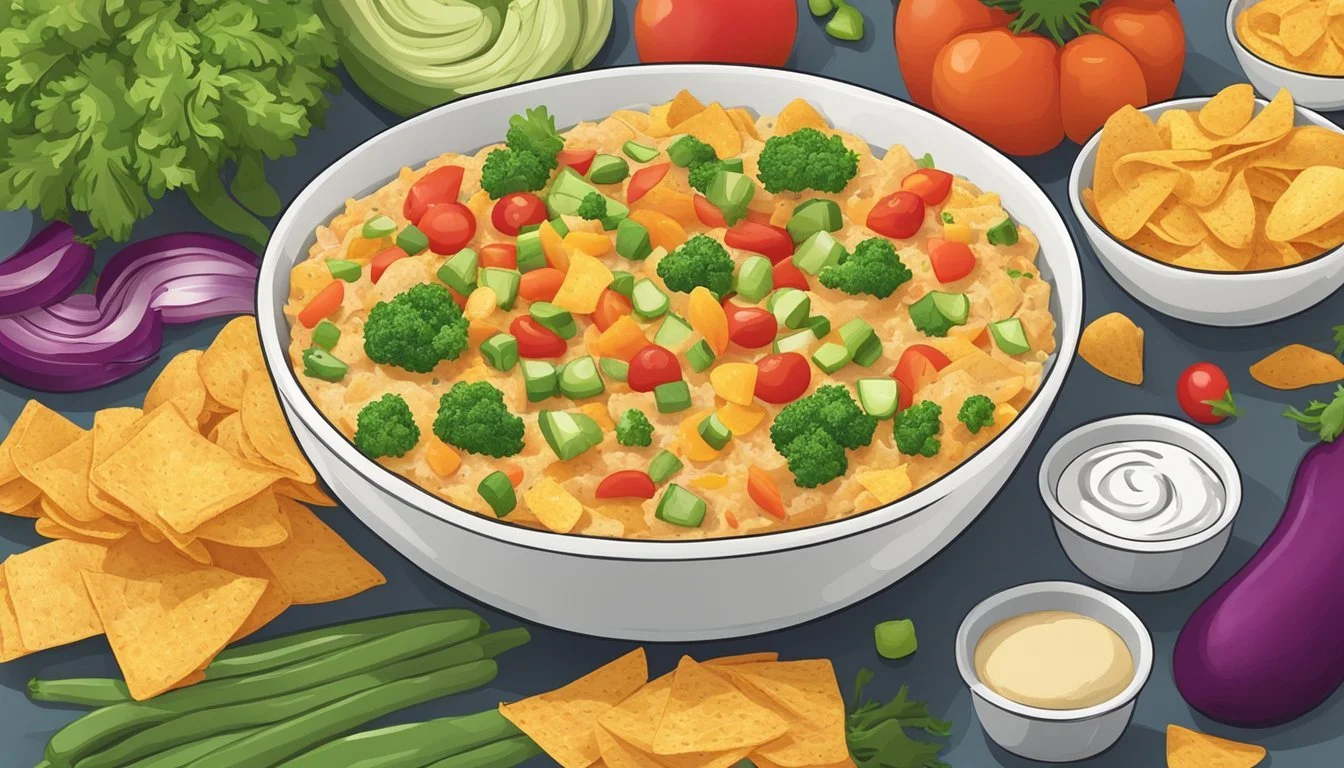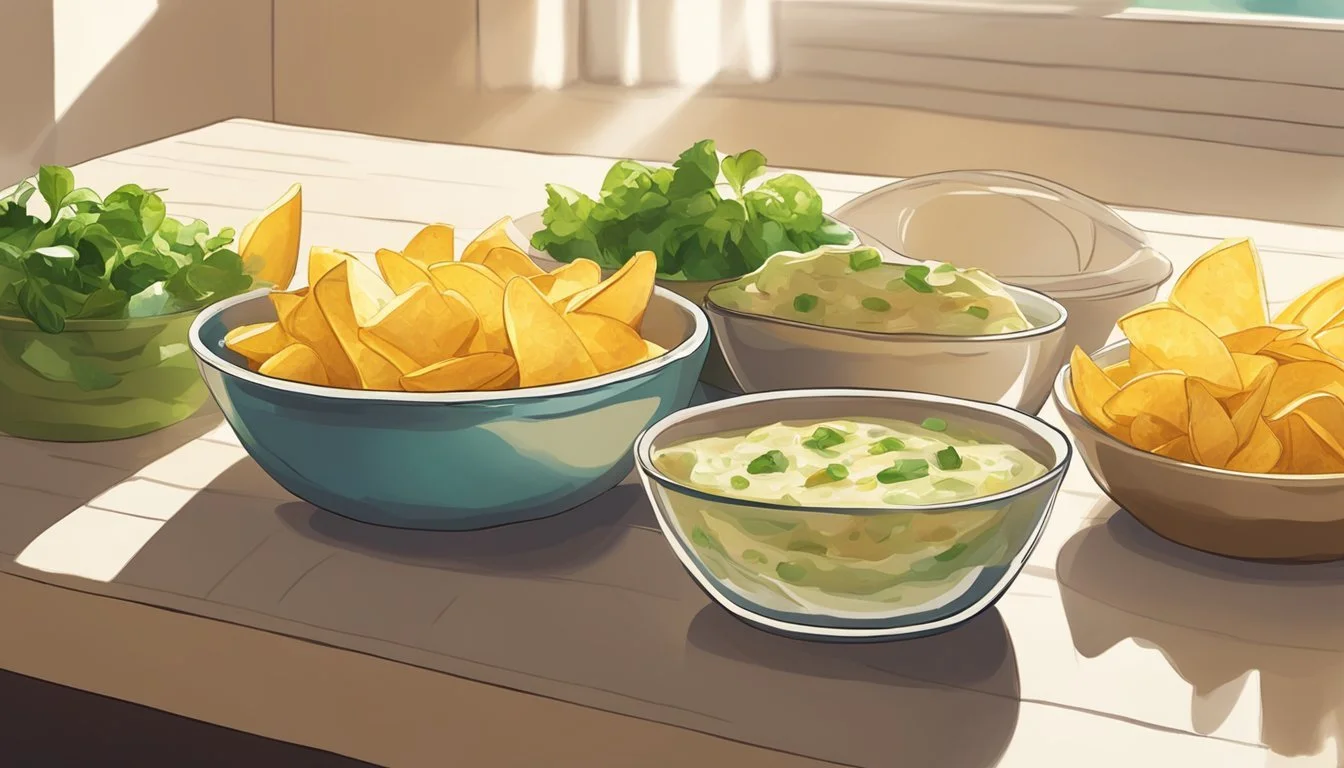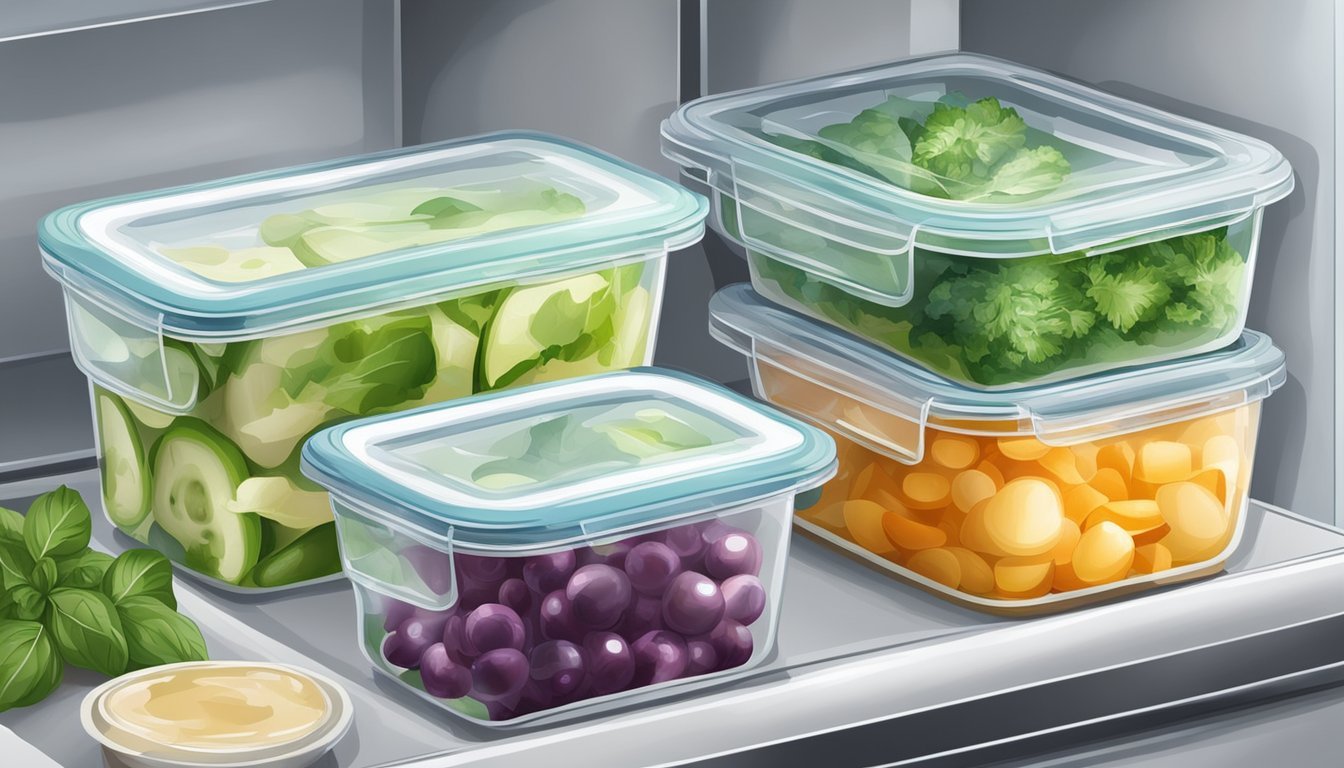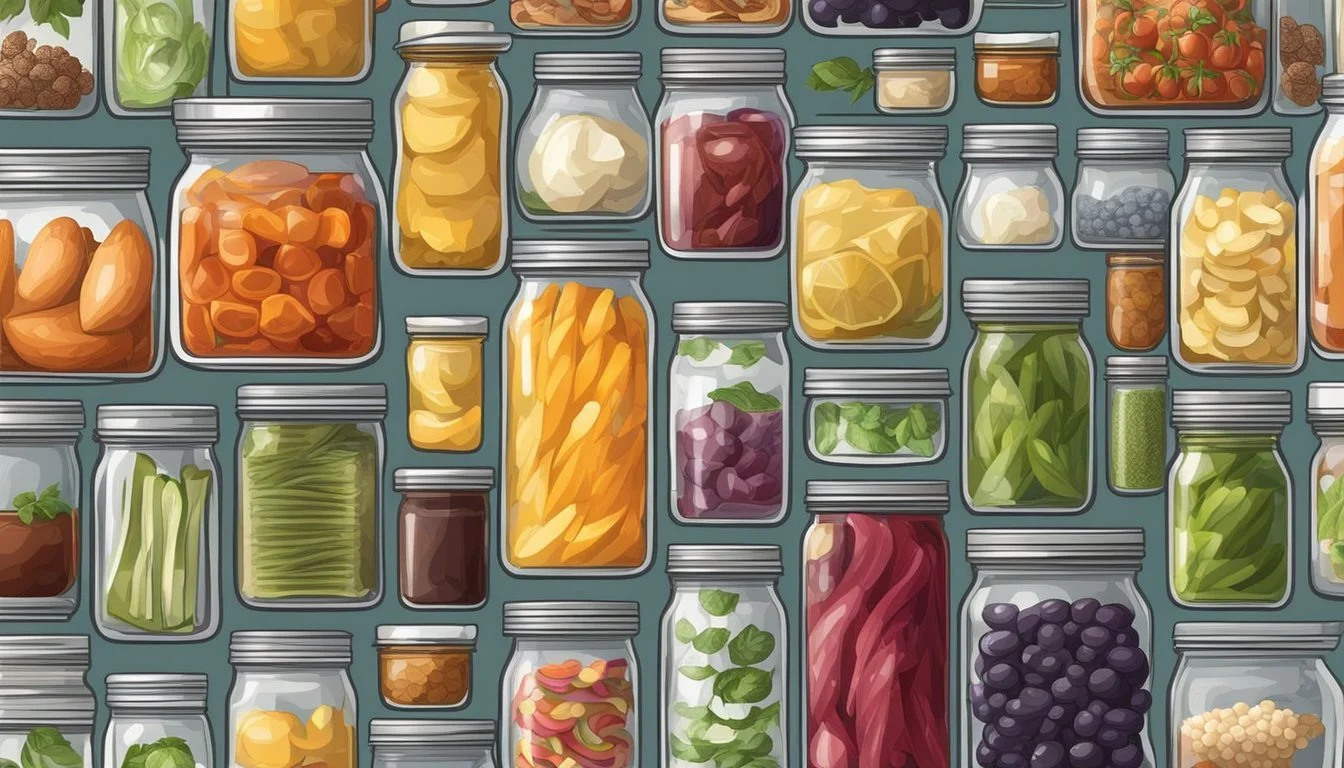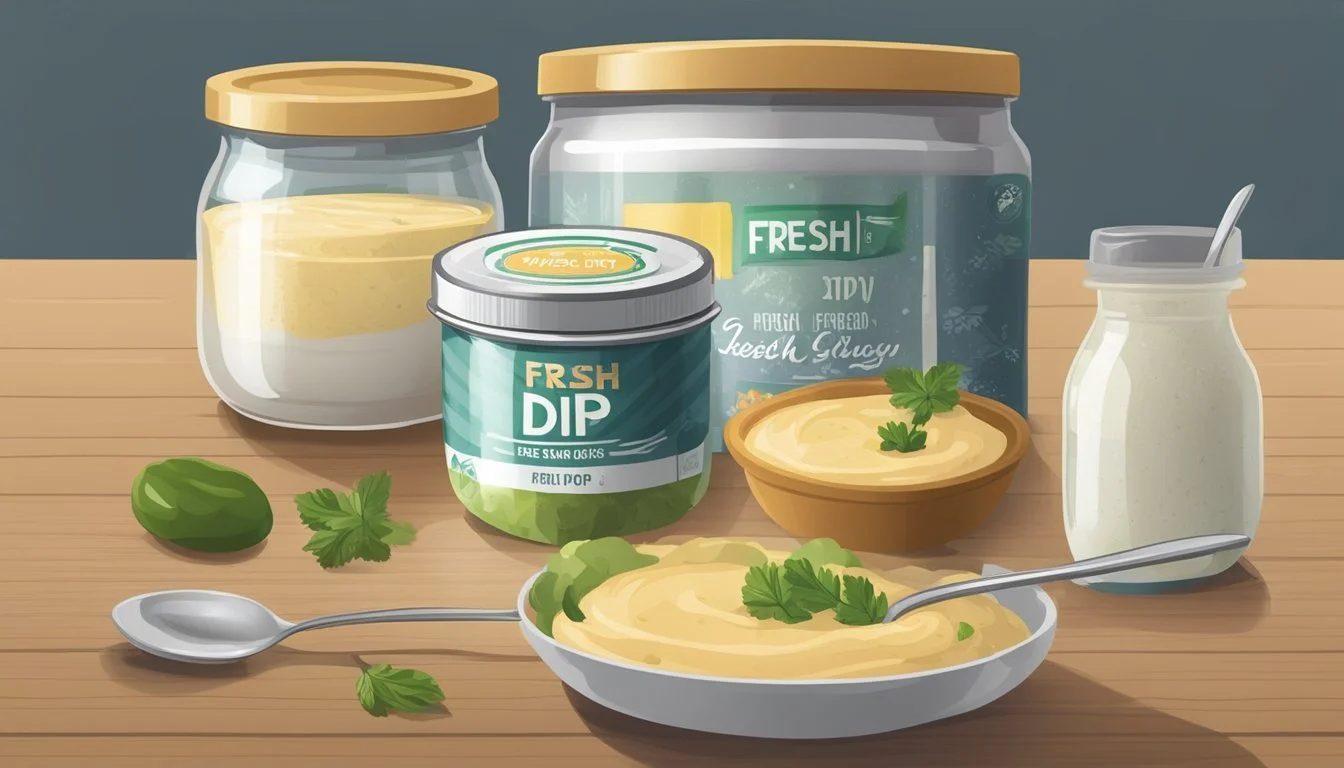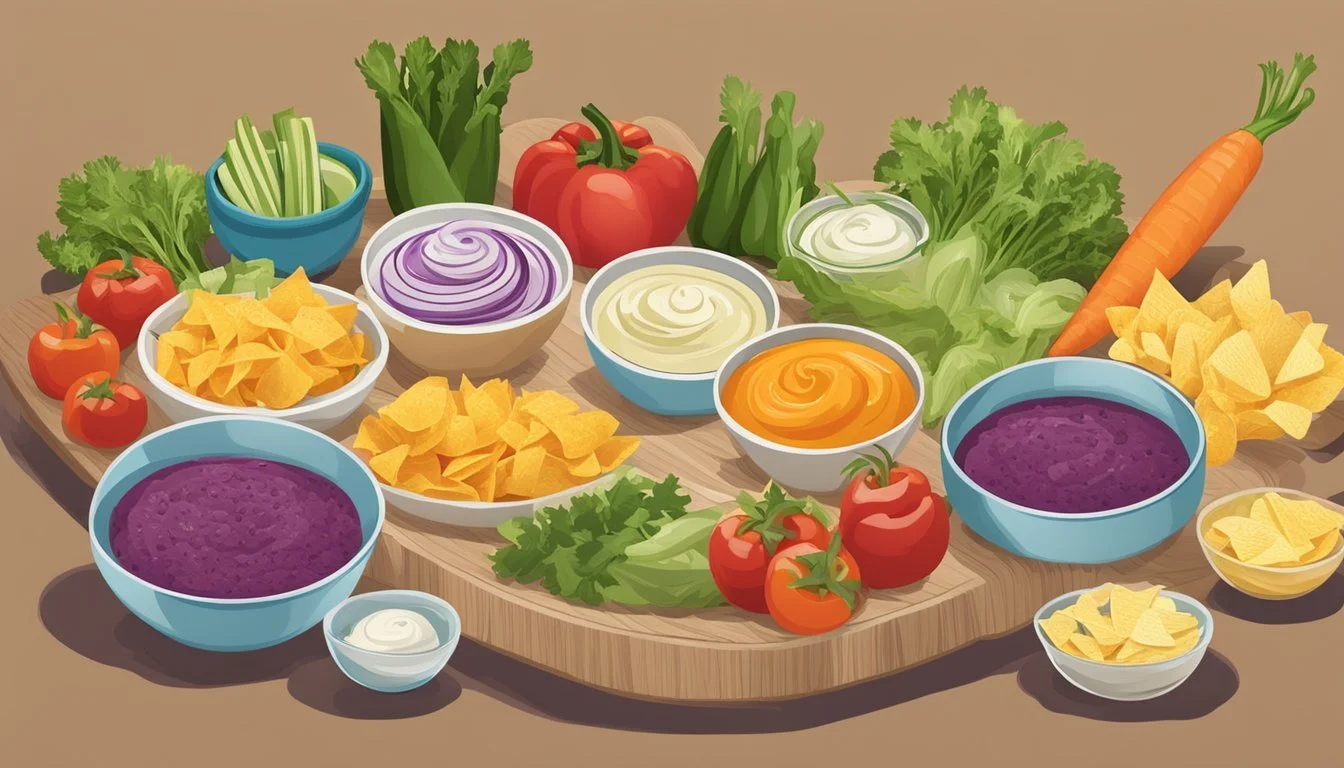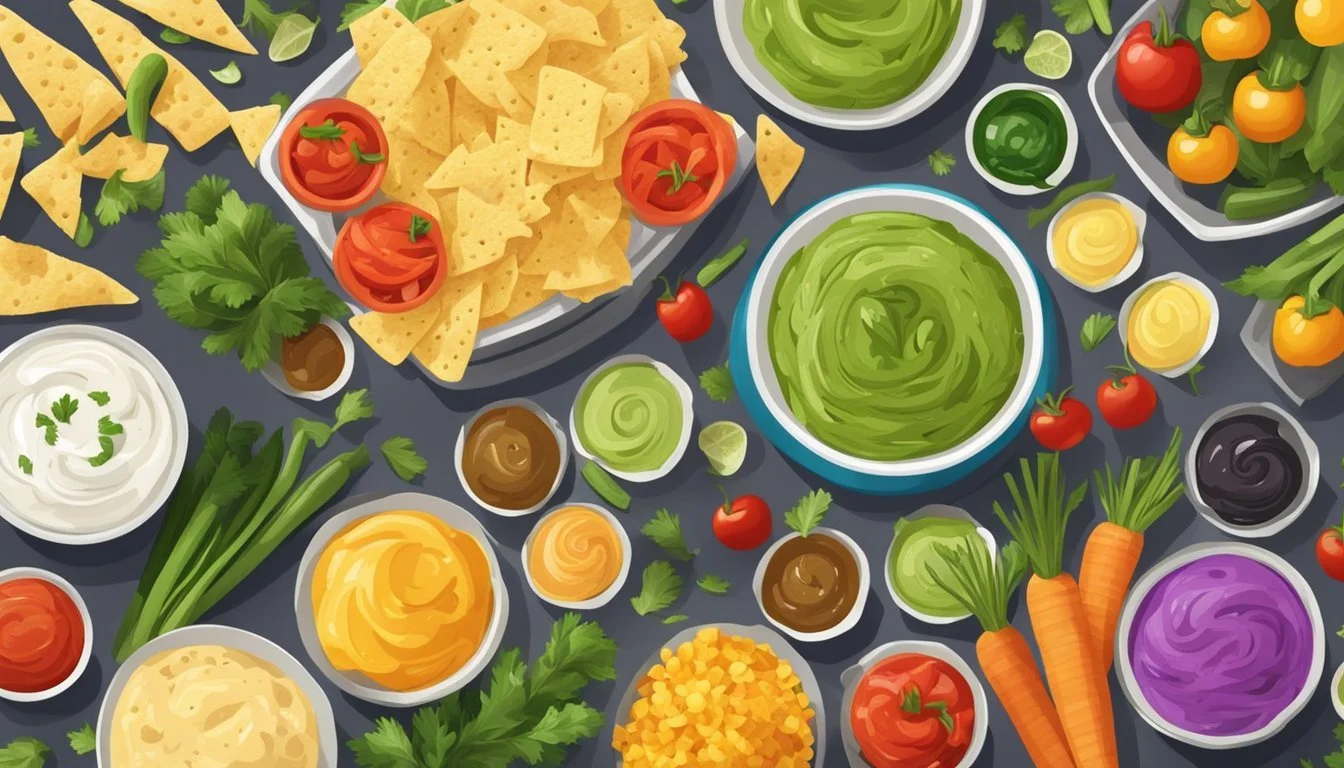How Long Do Fresh Dips Last?
Shelf Life and Storage Tips
Understanding the shelf life of fresh dips (how long do fresh dips last?) is crucial for both safety and enjoyment. Freshly made dips, like any other perishable food items, have a finite lifespan. This shelf life can be influenced by the dip's ingredients, the preparation method, and how the dip is stored. It's important to know how long a dip will remain fresh to ensure it is consumed when it's at its best quality and to avoid the risk of foodborne illness.
For instance, homemade seafood dips such as crab (how long does crab last?) and shrimp dips typically last between three to five days in the refrigerator when stored in an airtight container. Dairy-based dips, including those made with sour cream (how long does cream last?), yogurt, or cream cheese (how long does cream cheese last?), tend to remain fresh for about five to seven days under refrigeration. On the contrary, non-dairy dips like salsa may have a slightly longer shelf life when unopened, due to their acidic nature that helps preserve the contents.
Understanding Dips
Dips are culinary accompaniments designed to enhance the flavor of the foods into which they're dipped, with variations spanning from creamy cheese bases to tangy salsas.
What Constitutes a Dip?
A dip is a product designed to complement various food items, from chips and bread to vegetables and fruits. It usually has a fluid or semi-solid consistency that allows for easy coating and provides a burst of flavor. Homemade dips often utilize fresh ingredients and can include items like sour cream, cream cheese, guacamole, and hummus. On the other hand, store-bought dips might contain preservatives and can last longer but may not have the same fresh taste as homemade versions.
Categories of Dips
Dips can be classified into several categories based on their base ingredient and flavor profile:
Cream and Cheese-based Dips: This category includes sour cream dips, cream cheese dips, cheese dip, and french onion dip. They are rich in texture and flavor.
Base Ingredient Examples Cream Sour cream dip Cheese Cheese dip Cream Cheese French onion dip
Vegetable and Legume-based Dips: Common examples include salsa, guacamole, and hummus. These tend to be lighter and are often considered healthier options.
Base Ingredient Examples Tomato (for Salsa) Salsa Avocado (for Guacamole) Guacamole Chickpeas (for Hummus) Hummus
Each type of dip has its own lifespan, with homemade dairy-based dip varieties typically lasting five to seven days in the refrigerator, while salsa can often stay longer due to its acidic nature. It's crucial to understand these differences to ensure both quality and safety when consuming these products.
Factors That Affect Freshness
Several factors influence how long fresh dips remain palatable. Ingredients, storage temperature, and container integrity are pivotal for maintaining the quality and freshness of dips.
Ingredients and Their Role
The type of ingredients used in homemade or store-bought dips plays a crucial role in their shelf life. Dairy-based dips, which may include sour cream, yogurt, or cream cheese, typically last about five to seven days in the fridge if stored properly. Preservatives in store-bought dips can prolong freshness, whereas homemade dips, lacking these preservatives, may spoil sooner.
Freshness of Ingredients: The initial quality of ingredients can dictate a dip's longevity. Fresh, high-quality ingredients can extend a dip's life.
Type of Ingredients: Dips with fresh vegetables or seafood such as crab or shrimp dips might have a shorter fridge life (three to five days) than those primarily made with dairy products.
The Impact of Temperature
Refrigeration is key to prolonging the freshness of dips. Dips should be stored at a steady temperature of 40°F or below. Fluctuations in temperature can accelerate spoilage and decrease the quality of the dip.
Consistent Refrigeration: Ensures safety and maintains flavor.
Room Temperature: If dips are left out, they should not remain at room temperature for more than two hours to prevent bacterial growth.
Open vs Sealed Containers
The way a dip is stored significantly affects its freshness. Dips kept in airtight containers retain their flavor and quality better than those in containers that are not properly sealed.
Airtight Containers: Minimizes exposure to air, which can lead to contamination and oxidation.
Opened Containers: Once opened, even when refrigerated, the dip should be consumed within the manufacturer's recommended timeframe, which can range from 10-14 days for store-bought dips.
These factors are essential for anyone wanting to ensure that their dips stay fresh and safe to consume for as long as possible.
Optimal Storage Practices
Proper storage techniques are crucial to maintaining the freshness and extending the shelf life of dips while preventing the growth of harmful bacteria. Below are specific guidelines for refrigerating, freezing, and the use of airtight containers.
Refrigerating Dips
When refrigerating dips, it's essential to keep them at a consistent temperature below 40°F. Dairy-based dips should be consumed within five to seven days for optimal quality. For non-dairy dips, such as those with tomato bases, shelf life may vary but typically three to four days is recommended for freshness.
Tip for Refrigeration:
Store dips on the middle or upper shelves of the fridge, where temperature is most constant.
Keep dips away from the fridge door to avoid temperature fluctuations.
Can Dips Be Frozen?
Freezing can significantly extend a dip's shelf life. Many dips, especially those that are dairy-based, can be frozen for two to three months. When freezing, it is important to:
Allow room for expansion in the container.
Label containers with the freeze date for reference.
Important Note: Thaw dips in the refrigerator overnight before consuming to ensure the best texture and flavor.
Airtight Containers: Yes or No
Using an airtight container is essential for all dips to maintain freshness and prevent oxygen from degrading the quality. Containers can be made of either plastic or glass; however, for quality purposes, glass is often preferred as it doesn't absorb flavors or odors.
Airtight Storage Tips:
Seal dips promptly after use.
Check the lid for a secure fit to ensure airtight storage.
Adhering to these storage practices assists in keeping dips fresh and safe for consumption.
Recognizing Spoilage
When assessing if a dip has spoiled, one should look for changes in visual and textural properties, as well as alterations in smell and taste that indicate spoilage.
Visual and Textural Clues
Spoiled dips often exhibit visible signs that should not be ignored. These can include:
Mold: Any presence of mold, which can appear as fuzzy spots of white, green, or black, is a clear signal that the dip should not be consumed.
Discoloration: If the dip's color has darkened, lightened, or changed in a way that is unnatural for the specific product, this can indicate spoilage.
Texture: The consistency of the dip should be uniform. If it becomes watery, separated, or develops a slimy or unusually thick texture, it has likely gone bad.
Smell and Taste Indicators
The aroma and flavor of a dip are reliable indicators of its freshness:
Odor: A fresh dip should have a clean and characteristic smell. An off odor or sour smell suggests the growth of spoilage bacteria.
Flavor: If there is a noticeable sour or otherwise off-putting flavor that deviates from the dip's intended taste profile, it is best to discard it.
One should always trust their senses when evaluating a dip's condition, as consuming spoiled products can pose health risks.
Safety Precautions
When it comes to extending the life of fresh dips, safety precautions are crucial. These include understanding the risks associated with double-dipping and employing proper handling techniques to prevent foodborne illnesses.
The Dangers of Double-Dipping
Double-dipping is a common practice that can introduce bacteria and other harmful microorganisms into your dip, leading to contamination. Once contaminated, bacterial growth can accelerate, especially in protein-rich or dairy-based dips. For instance, when a person who has just taken a bite from their chip dips a second time, their saliva can transfer bacteria into the dip. Research shows that even a small amount of contamination can lead to a significant increase in bacteria, which, when consumed, can increase the risk of food poisoning.
Proper Handling Techniques
To minimize the risk of bacterial contamination and the consequent spread of foodborne illness, it's essential to:
Store Dips Properly:
Keep refrigerated at all times to slow bacterial growth.
Consume within the recommended time frame, usually 3-5 days for homemade dips.
Serve Dips Safely:
Always use clean utensils for serving.
Avoid keeping dips at room temperature for more than two hours.
Discourage double-dipping by providing individual serving dishes.
These handling techniques help to maintain the safety and quality of fresh dips, protecting consumers from harmful bacteria and extending the shelf life of the product.
Preservation Techniques
To maximize the shelf life of fresh dips, various preservation methods can be employed. The techniques vary based on whether one aims to use chemical preservatives or natural ingredients to maintain freshness and safety.
Extending Shelf Life with Additives
Manufacturers often utilize preservatives to extend the shelf life of store-bought dips. These additives inhibit spoilage and bacterial growth. For homemade dips, one might consider using ingredients like lemon juice, salt, or vinegar. These additives serve as preservatives without the need for artificial chemicals.
Lemon Juice: Acidic in nature, it can add a tangy flavor while preserving the dip.
Salt: An age-old preservative; creates a hostile environment for bacteria.
Vinegar: With its acetic acid content, it is effective in preventing spoilage.
Natural Preservers
For those preferring a more natural approach, several methods can maintain the quality of fresh dips without additives. Storing dips in an airtight container is crucial to preventing the intrusion of air and contaminants. Freezing is a viable option for long-term preservation, effectively pausing deterioration. Incorporating fresh herbs (how long do fresh herbs last?) with natural preservative properties can also extend the overall freshness.
Airtight Containers: Seals out air and moisture, crucial for refrigerated storage.
Freeze: An excellent method for significantly extending a dip's edibility beyond refrigeration.
Fresh Herbs: Ingredients such as rosemary or thyme can have preserving effects.
Usage and Servings
When considering the usage and servings of fresh dips, one must take into account not only the type of dip but also the method of serving and reheating to maintain quality.
Serving Suggestions for Dips
Dips like French onion, guacamole, salsa, spinach dip, and cheese dip are popular accompaniments to a variety of dishes and snacks. They should be served in appropriate quantities to avoid leftovers, which can deteriorate in quality over time. For example:
French Onion: Serve in a small bowl, ideal as a spread for toast or crackers.
Guacamole: Offer with tortilla chips or as a topping for tacos, ensuring it's consumed immediately once opened.
Salsa: Present alongside nachos or as a condiment in a burrito bowl.
Spinach Dip: Best served with vegetable sticks or crusty bread.
Cheese Dip: Pairs well with pretzels, chips, or bread cubes.
When opening the dip container, it’s important to use clean utensils each time to prevent contamination. Any unused dip should be promptly returned to the refrigerator to maximize freshness.
From Fridge to Table: Reheating Tips
Reheating dips properly ensures that their flavor and texture are preserved. Not all dips respond well to reheating, but here are some guidelines for those that do:
Cheese Dips: Gently reheat in a microwave or on the stovetop, stirring frequently to maintain a smooth consistency.
Spinach Dip: If it contains cheese or cream, reheat it on low heat, stirring occasionally.
French Onion Dip: Avoid reheating as it may alter the texture significantly.
If a dip has separated or looks curdled after refrigeration, stirring can help restore its original consistency, though this may not be effective for all types. When serving reheated dips, a fresh garnish can enhance both the presentation and flavor.
Post-Opening Longevity
Once opened, the longevity of dips varies widely based on ingredients and storage conditions. Labels often provide a guideline for the expected shelf life and food storage information, ensuring optimal freshness.
Charting the Life Span After Opening
Type of Dip Expected Shelf Life After Opening Dairy-based Dips (e.g., sour cream, French onion) 5-7 days Tomato-based Dips (e.g., salsa) 5-7 days Homemade Seafood Dips 3-5 days Store-bought Dips 10-14 days
Dairy-based dips should be refrigerated promptly and typically remain fresh for up to 5-7 days. It's crucial to check the product's label for specific expiration date and food storage information.
Tomato-based dips, such as salsa, can last 5-7 days after opening if kept refrigerated. These dips often contain acids that slightly extend their shelf life, but they still require careful storage.
Homemade seafood dips have a shorter shelf life, remaining fresh for about 3-5 days when stored in an airtight container in the refrigerator.
According to manufacturers like Frito-Lay, store-bought dip containers, once opened, are recommended to be consumed within 10-14 days for optimum flavor, and they should adhere to the "refrigerate after opening" instructions clearly indicated on the product's label.
Consumers should note that any deviation from recommended storage practices or using dips beyond their expiration date could compromise both flavor and safety.
Freezing and Thawing
Proper freezing and thawing methods are essential to extend the shelf life of fresh dips while maintaining their quality. This section covers the techniques to effectively freeze dips for later use and explains the correct procedure to thaw them, ensuring food safety and taste preservation.
How to Properly Freeze Dips
To successfully freeze dips, one should portion the dip into manageable amounts, ideally in an airtight container or heavy-duty freezer bags to prevent freezer burn. Label each container or bag with the date of freezing. Different dips may have various components that affect their freezability; for instance, emulsions may separate when frozen and thawed. Here's a summary for freezing:
Airtight container/freezer bags: Essential to prevent air exposure.
Labeling: Include name and date to track shelf life.
Portion control: Freeze in small batches for easy thawing.
The Thawing Process Explained
When thawing frozen dips, it's crucial to plan ahead. The safest method is to thaw the frozen dip in the refrigerator, usually taking several hours or overnight. This slow process ensures even thawing and minimizes the risk of bacterial growth. For a quicker method, the cold water thawing method can be used where the sealed bag is submerged in cold water, changing the water every 30 minutes until thawed. One should never thaw dips at room temperature as it can encourage the growth of harmful bacteria. Here's a guide for the thawing process:
Refrigerator Thawing:
Place the dip in the refrigerator.
Allow several hours or overnight to thaw completely.
Cold Water Thawing:
Keep the dip in a sealed bag.
Submerge in cold water, change water every 30 minutes.
Use this method for quick thawing.
Using these methods, one can ensure the quality and safety of their dips, enjoying them at a later date while minimizing the risk of foodborne illnesses.
Making Dips Last
In preserving the quality and extending the shelf life of dips, whether homemade or store-bought, key factors involve proper storage and understanding the nature of the ingredients used.
Homemade vs. Store-Bought Longevity
Homemade dips have a shorter shelf life compared to their store-bought counterparts due to the lack of preservatives. A homemade dip, such as a crab dip or shrimp dip, typically lasts for 3 to 5 days in the refrigerator when kept in an airtight container. Store-bought dips, on the other hand, can last longer both before and after opening due to added preservatives but should still be refrigerated after opening to maintain freshness.
Homemade dips: 3-5 days in an airtight container
Store-bought dips: Longer shelf life; refrigerate after opening
Key Takeaways for Maximum Freshness
- Refrigeration: Always keep dips refrigerated at or below 40°F to ensure maximum freshness.
Airtight Containers: Transfer dips to airtight containers to prevent oxidation and contamination.
Dairy-based dips: Freshness extends up to 7 days for dairy-based like yogurt or sour cream dips.
Cheese dips: Those made with harder cheeses, such as cheddar, can last up to 3 weeks.
French onion dip: When frozen in small portions, can last up to 3 months.
Tips for maintaining quality:
Use clean utensils to avoid introducing bacteria.
For dips that don't freeze well, like cream cheese dips, freezing is not recommended.
If a dip has been left at room temperature for over two hours, discard it to prevent foodborne illness.
Factors influencing shelf life:
Ingredients' nature
Packaging quality
Storage conditions immediately after opening


